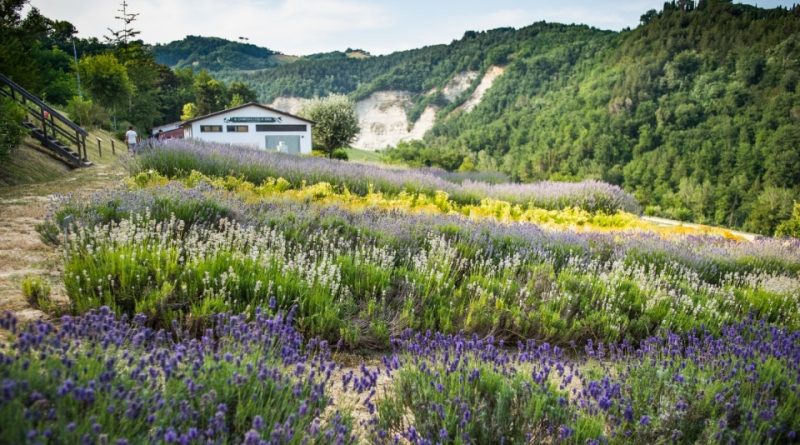Augusto Rinaldi Ceroni herb garden
Augusto Rinaldi Ceroni herb garden
The Augusto Rinaldi Ceroni herb garden is a botanical garden located in the municipality of Casola Valsenio (RA) and is owned by the Emilia-Romagna Region.
The management of this botanical garden, entrusted to the Municipality of Casola Valsenio until 2015 and from 2016 to the Management Body for Parks and Biodiversity – Romagna, is carried out in collaboration with the Montana Valle del Senio Cooperative.
History –
The Herb Garden was inaugurated in 1975 and today is named after its founder Augusto Rinaldi Ceroni. This botanical garden was born with the aim of conserving and cultivating plants of medicinal and aromatic interest.
The Garden, included in the Museum circuit of the province of Ravenna, includes about 480 species of medicinal plants used in cooking, medicine and cosmetics since the late Middle Ages, when they were worked in the workshops of the convents.
The complex constitutes a center of knowledge and enhancement regarding the cultivation and use of medicinal plants, thanks to activities and purposes ranging from research to dissemination from experimentation to teaching, involving both experts and visitors of all ages.
The Garden can be visited freely during the day at any time of the year, observing the rules of conduct dictated by common sense and respect for structures and crops. Visitors are therefore required to follow the paths outside the cultivated plots, avoiding tearing and damaging plants.
To deepen the knowledge of plants and flowers also through the senses of touch and smell, the special path called the Perfume Gallery is provided. During working hours and on the occasion of events, it is also possible to visit the Chamber of Wonders and purchase medicinal plants, forgotten fruit plants and products derived from the processing of herbs from the Garden, displayed in the Emporium.

Description –
The Augusto Rinaldi Ceroni Herb Garden occupies an area of four hectares of land (it is one of the largest in Italy and Europe in terms of number of plants), is located in the Senio valley and hosts over 400 botanical species. autochthonous and not. The Valle del Senio Montana Cooperative plays a research, conservation and dissemination role.
Various species of aromatic, medicinal and honey plants are grown in the Herb Garden, and some varieties of forgotten fruit are preserved in the arboretum.
Structures and Collections –
Inside the Augusto Rinaldi Ceroni Herb Garden, important collections of aromatic, medicinal and other plants are cultivated and maintained.
The most characteristic species preserved in the garden are: angelica, calendula, Roman chamomile, echinacea, tarragon, hyssop, fennel, lavender and washbasin, lemon balm, mint, oregano, nettle, passionflower, rosemary, sage, annual savory, mountain savory, lime, thyme. Almost all plants come in multiple varieties.
The garden hosts both medicinal and aromatic plants: plants that are used in the kitchen, for example, such as chives, pimpinella, tarragon, rhubarb, borage, saffron, lovage and nepetella, and plants containing principles active ingredients associated for centuries with healing properties: for example, chamomile, hawthorn, digitalis, henbane, atropa belladonna, sage, valerian, echinacea.
There are also specimens of melliferous plants, that is, which favor the collection of pollen and nectar by the bees present in the hives of the garden, and other pollinating insects: for example, the horehound, the heart, the nepeta, the sulla, the grindelia cephalaria, rue and coriander.
Inside the garden there is also an arboretum.
In the arboretum, native plants and shrubs and varieties of fruits used for food in the past and now forgotten are recovered, such as rowan, medlar, dog rose, hawthorn, sea buckthorn, hazelnut. In addition, other plants are “service” for the ecosystem of the garden: there are plants useful for consolidating the soil and plants useful for officinal floriculture.
The garden also contains an olfactory gallery, an equipped area where it is possible to feel the essences that are prepared in the laboratories and to recognize the aromatic plants by their scents.
Guido Bissanti

